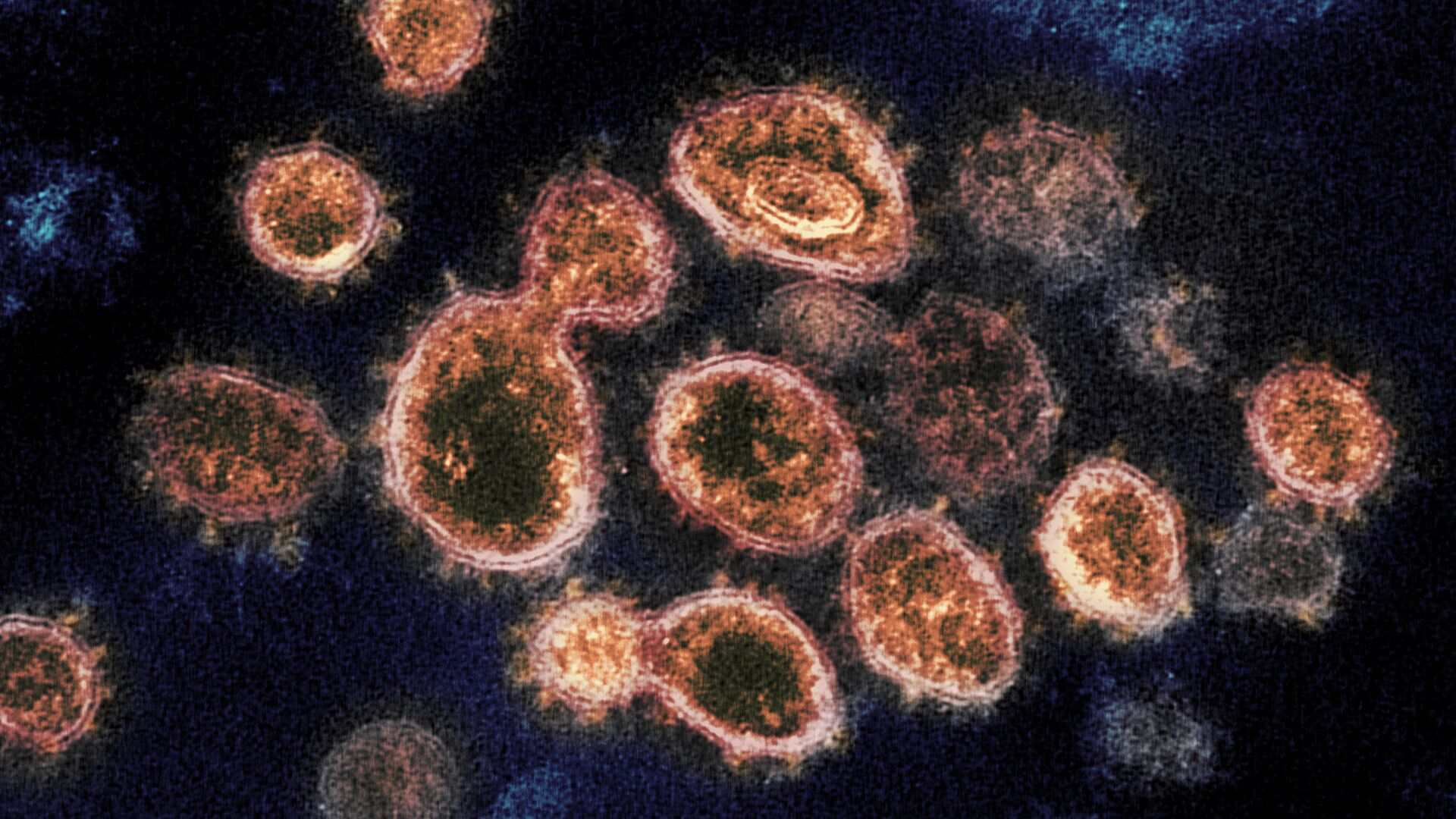https://sputnikglobe.com/20220103/sewage-analysis-can-help-monitor-covid-19-levels-and-predict-outbreaks-claim-us-health-experts-1091991892.html
Sewage Analysis Can Help Monitor COVID-19 Levels and Predict Outbreaks, Claim US Health Experts
Sewage Analysis Can Help Monitor COVID-19 Levels and Predict Outbreaks, Claim US Health Experts
Sputnik International
Sewage samples are to be increasingly used by health departments across the US to get a better idea of how much the coronavirus is spreading.
2022-01-03T09:48+0000
2022-01-03T09:48+0000
2022-01-03T09:48+0000
us
johns hopkins university
covid-19
https://cdn1.img.sputnikglobe.com/img/107877/08/1078770898_0:80:2048:1232_1920x0_80_0_0_38ea88130f6c0e14eb0b84a99d809fa3.jpg
Sewage samples are to be increasingly used by health departments across the US to get a better idea of how much the coronavirus is spreading, reported NBC News."Wastewater is going to be a leading indicator for what's going on in a given community and what's to come," said Dr. Amesh Adalja, a senior scholar at the Johns Hopkins Center for Health Security, adding:As at-home COVID-19 tests, the efficacy of which is the subject of speculation, are currently in high demand, state health departments have been increasingly getting on board with the method. Sewage monitoring has already revealed surging coronavirus cases in parts of California, Colorado, Idaho, Massachusetts, Missouri and North Carolina. The method is also reportedly being used in Canada, Spain and the United Kingdom.Currently, a team of scientists from the University of Missouri has been collaborating with the state Department of Health and Senior Services and the Department of Natural Resources to track the virus through sewage samples.As they separate the virus from larger particles of waste, they extract its genetic material to study it, while also able to identify specific variants. Thus, data shows that the highly contagious Omicron strain of the respiratory virus is spreading quickly throughout the state.Mutations associated with the Omicron variant were discovered in 32 of 57 wastewater samples collected statewide on 20 December, according to Jeff Wenzel, Chief of the Bureau of Environmental Epidemiology within the Missouri Department of Health and Senior Services, cited by The Associated Press. Biobot Analytic's wastewater dashboard shows that coronavirus levels detected in sewage samples across the US are currently higher than at any previous point in the pandemic.Wastewater monitoring is being touted as a way to better understand public health, especially in areas that do not have equal access to care.Sheree Pagsuyoin, an associate professor of civil and environmental engineering at the University of Massachusetts Lowell, explained that the coronavirus pandemic has ushered in a new era of wastewater analysis.“It’s sort of like mapping a trend,” she said.Sheree Pagsuyoin is part of a team of scientists from UMass Lowell and Northeastern University in Massachusetts that is creating and testing a low-cost, automated wireless sensor network that could detect SARS-CoV-2, the virus that causes COVID-19, in the air and in wastewater in real time. Called “DiSenDa,” which stands for Disease Surveillance with Multi-Modal Sensor Network and Data Analytics, the project’s goal is to “track COVID-19 transmission and prevent outbreaks before they spiral out of control and cost people’s lives and livelihoods”.The three-year pilot study will initially target COVID-19, but may eventually be used to detect other pathogens, such as cholera.
https://sputnikglobe.com/20220102/number-of-coronavirus-patients-at-new-york-hospitals-nearly-doubles-in-past-10-days-1091969997.html
Sputnik International
feedback@sputniknews.com
+74956456601
MIA „Rosiya Segodnya“
2022
News
en_EN
Sputnik International
feedback@sputniknews.com
+74956456601
MIA „Rosiya Segodnya“
Sputnik International
feedback@sputniknews.com
+74956456601
MIA „Rosiya Segodnya“
covid-19 omicron sewage
Sewage Analysis Can Help Monitor COVID-19 Levels and Predict Outbreaks, Claim US Health Experts
Fragments of the SARS-CoV-2 virus that causes COVID-19 can enter the sewage through an infected person’s faeces and when washed off hands and bodies via sinks and showers.
Sewage samples are to be increasingly used by health departments across the US to get a better idea of how much the
coronavirus is spreading, reported NBC News.
"Wastewater is going to be a leading indicator for what's going on in a given community and what's to come," said Dr. Amesh Adalja, a senior scholar at the Johns Hopkins Center for Health Security, adding:
“It will also give an indication of what’s to come, because not every Covid case comes to clinical attention — many cases are mild or asymptotic.”
As at-home
COVID-19 tests, the efficacy of which is the subject of speculation, are currently in high demand, state health departments have been increasingly getting on board with the method. Sewage monitoring has already revealed surging coronavirus cases in parts of California, Colorado, Idaho, Massachusetts, Missouri and North Carolina. The method is also reportedly being used in Canada, Spain and the United Kingdom.

2 January 2022, 02:45 GMT
Currently, a team of scientists from the University of Missouri has been collaborating with the state Department of Health and Senior Services and the Department of Natural Resources to track the virus through sewage samples.
As they separate the virus from larger particles of waste, they extract its genetic material to study it, while also able to identify specific variants. Thus, data shows that the highly contagious Omicron strain of the respiratory virus is spreading quickly throughout the state.
Mutations associated with the
Omicron variant were discovered in 32 of 57 wastewater samples collected statewide on 20 December, according to Jeff Wenzel, Chief of the Bureau of Environmental Epidemiology within the Missouri Department of Health and Senior Services, cited by The Associated Press.
“Every time an infected person uses the toilet, they’re flushing this information down the toilet, where it’s collecting and aggregating and mixing with poop from thousands of other people,” Newsha Ghaeli, a co-founder and the president of Biobot Analytics, a wastewater epidemiology company based in Massachusetts, was cited as saying.
Biobot Analytic's wastewater
dashboard shows that coronavirus levels detected in sewage samples across the US are currently higher than at any previous point in the pandemic.
Wastewater monitoring is being touted as a way to better understand public health, especially in areas that do not have equal access to care.
Sheree Pagsuyoin, an associate professor of civil and environmental engineering at the University of Massachusetts Lowell, explained that the coronavirus pandemic has ushered in a new era of wastewater analysis.
“It’s sort of like mapping a trend,” she said.
Sheree Pagsuyoin is part of
a team of scientists from UMass Lowell and Northeastern University in Massachusetts that is creating and testing a low-cost, automated wireless sensor network that could detect SARS-CoV-2, the virus that causes COVID-19, in the air and in wastewater in real time. Called “DiSenDa,” which stands for Disease Surveillance with Multi-Modal Sensor Network and Data Analytics, the project’s goal is to “track COVID-19 transmission and prevent outbreaks before they spiral out of control and cost people’s lives and livelihoods”.
The three-year pilot study will initially target COVID-19, but may eventually be used to detect other pathogens, such as cholera.




